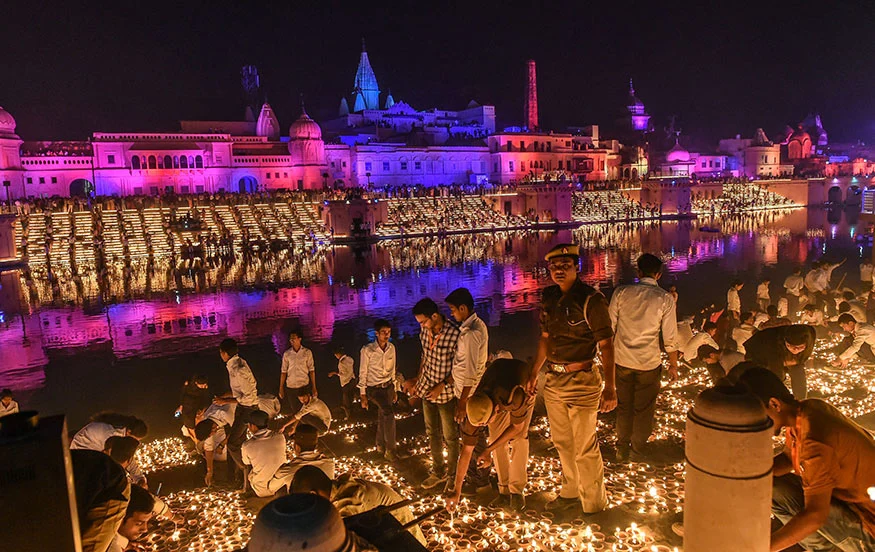Table of Contents:
- Introduction to Ayodhya’s Ancient Temples
- Must-Visit Temples in Ayodhya
- The Significance of Temple Architecture
- Experiencing the Spiritual Ambiance
- Tips for a Respectful Temple Visit
- Combining Temple Tours with Local Culture
- FAQs for Travelers
1. Introduction to Ayodhya’s Ancient Temples
Ayodhya, a city immersed in spiritual and historical significance, is home to some of India’s most ancient and revered temples. These temples are not just places of worship but are also repositories of culture, history, and architectural excellence. A guided tour of these sacred sites offers a deep dive into the city’s rich religious heritage and a glimpse into the stories and legends of ancient India.
- Ayodhya’s temples are integral to its spiritual and cultural heritage.
- Guided tours offer insights into history, culture, and architecture.
2. Must-Visit Temples in Ayodhya
Among Ayodhya’s plethora of temples, certain ones stand out for their historical and spiritual importance. The Ram Janmabhoomi temple, Hanuman Garhi, and Kanak Bhawan are essential stops on any temple tour. Each temple has its unique story, deity, and architectural style, reflecting different eras and aspects of Hinduism.
- Key temples include Ram Janmabhoomi, Hanuman Garhi, and Kanak Bhawan.
- Each temple has a unique history, deity, and architectural style.
3. The Significance of Temple Architecture
The architecture of Ayodhya’s temples is a testament to the skill and creativity of ancient artisans. These structures range from modest, older styles to more elaborate, newer constructions. Understanding the architectural nuances and symbolism can greatly enhance the experience of visiting these temples.
- The architecture ranges from ancient styles to modern constructions.
- Architectural nuances and symbolism are significant aspects of these temples.
4. Experiencing the Spiritual Ambiance
A visit to Ayodhya’s temples is as much about experiencing the spiritual ambiance as it is about admiring their beauty. The atmosphere of devotion, the rituals, and the chanting of prayers and hymns create a profound sense of peace and spirituality. Participating in or observing these rituals can be a deeply moving experience.
- Temples offer a profound sense of peace and spirituality.
- Experiencing the rituals and chants is an integral part of the visit.
5. Tips for a Respectful Temple Visit
Visitors to Ayodhya’s temples should be mindful of local customs and traditions. Dressing modestly, removing shoes before entering the temples, and respecting the sanctity of the prayer areas are essential etiquettes. Photography rules vary by temple, so it’s advisable to check in advance.
- Dress modestly and remove shoes before entering.
- Check photography rules and respect local customs and traditions.
6. Combining Temple Tours with Local Culture
A temple tour in Ayodhya can be combined with experiencing the local culture. Visitors can explore the nearby markets, taste local vegetarian cuisine, and interact with the residents to get a holistic view of Ayodhya’s way of life. Many temples also have cultural programs and religious discourses that visitors can attend.
- Explore local markets and cuisine.
- Attend cultural programs and religious discourses.
7. FAQs for Travelers
- What are the must-visit temples in Ayodhya?
- Ram Janmabhoomi, Hanuman Garhi, and Kanak Bhawan.
- Is there a dress code for visiting the temples?
- Modest clothing is recommended.
- Can I take photos inside the temples?
- This varies by temple; always check the rules beforehand.
- Are guided temple tours available?
- Yes, guided tours are available and recommended for deeper insights.
- How much time should I allocate for a temple tour?
- A full day is recommended to explore multiple temples.
- Is there an entry fee for the temples?
- Most temples do not have an entry fee, but donations are welcomed.
- Are the temples accessible for visitors with mobility issues?
- Accessibility varies; some temples have facilities for easier access, while others may be more challenging.
- Can I participate in the rituals and ceremonies?
- Participation depends on the temple’s rules, but observing is always an option.
Conclusion: Exploring the ancient temples of Ayodhya is more than just a tour; it’s a journey through the spiritual heart of one of India’s most sacred cities. Each temple tells a story, embedded in its walls and resonating in its rituals. Whether you seek spiritual solace, architectural beauty, or a deeper understanding of India’s rich cultural tapestry, Ayodhya’s temples offer a truly enriching experience. Embracing the city’s spiritual ambiance, respecting its traditions, and immersing oneself in its ancient lore, visitors can connect with a part of India’s soul that continues to thrive in Ayodhya.
- A temple tour in Ayodhya is a journey through India’s spiritual and cultural heritage.
- It offers an opportunity to connect with the ancient lore and living traditions of one of India’s most sacred cities.

